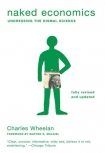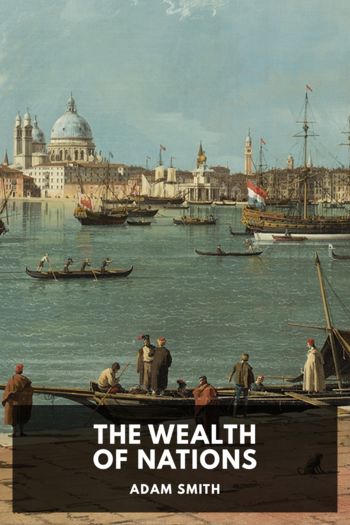Naked Economics, Wheelan, Charles [open ebook .txt] 📗

Book online «Naked Economics, Wheelan, Charles [open ebook .txt] 📗». Author Wheelan, Charles
Inflation is bad; deflation, or steadily falling prices, is much worse. Even modest deflation can be economically devastating, as Japan has learned over the past two decades. It may seem counterintuitive that falling prices could make consumers worse off (especially if rising prices make them worse off, too), but deflation begets a dangerous economic cycle. To begin with, falling prices cause consumers to postpone purchases. Why buy a refrigerator today when it will cost less next week? Meanwhile, asset prices also are falling, so consumers feel poorer and less inclined to spend. This is why the bursting of a real estate bubble causes so much economic damage. Consumers watch the value of their homes drop sharply while their mortgage payments stay the same. They feel poorer (because they are). As we know from the last chapter, when consumers spend less, the economy grows less. Firms respond to this slowdown by cutting prices further still. The result is an economic death spiral, as Paul Krugman has noted:
Prices are falling because the economy is depressed; now we’ve just learned that the economy is depressed because prices are falling. That sets the stage for the return of another monster we haven’t seen since the 1930s, a “deflationary spiral,” in which falling prices and a slumping economy feed on each other, plunging the economy into the abyss.4
This spiral can poison the financial system, even when bankers are not doing irresponsible things. Banks and other financial institutions get weaker as loans go bad and the value of the real estate and other assets used as collateral for those loans falls. Some banks begin to have solvency problems; others just have less capital for making new loans, which deprives otherwise healthy firms of credit and spreads the economic distress. The purpose of the Troubled Asset Relief Program (TARP) intervention at the end of the George W. Bush administration—the so-called Wall Street bailout—was to “recapitalize” America’s banks and put them back in a position to provide capital to the economy. The design of the program had its flaws. Communication about what the administration was doing and why they were doing it was abysmal. But the underlying concept made a lot of sense in the face of the financial crisis.
Monetary policy alone may not be able to break a deflationary spiral. In Japan, the central bank cut nominal interest rates to near zero a long time ago, which means that they can’t go any lower. (Nominal interest rates can’t be negative. Any bank that loaned out $100 and asked for only $98 back would be better off just keeping the $100 in the first place.)* Yet even with nominal rates near zero, the rental rate on capital—the real interest rate—might actually be quite high. Here is why. If prices are falling, then borrowing $100 today and paying back $100 next year is not costless. The $100 you pay back has more purchasing power than the $100 you borrowed, perhaps much more. The faster prices are falling, the higher your real cost of borrowing. If the nominal interest rate is zero, but prices are falling 5 percent a year, then the real interest rate is 5 percent—a cost of borrowing that is too steep when the economy is stagnant. Economists have long been convinced that what Japan needs is a stiff dose of inflation to fix all this. One very prominent economist went so far as to encourage the Bank of Japan to do “anything short of dropping bank notes out of helicopters.”5 To hark back to the politics of organized interests covered in Chapter 8, one theory for why Japanese officials have not done more to fight falling prices is that Japan’s aging population, many of whom live on fixed incomes or savings, see deflation as a good thing despite its dire consequences for the economy as a whole.
The United States has had its own encounters with deflation. There is a consensus among economists that botched monetary policy was at the heart of the Great Depression. From 1929 to 1933, America’s money supply fell by 28 percent.6 The Fed did not deliberately turn off the credit tap; rather, it stood idly by as the money supply fell of its own volition. The process by which money is circulated throughout the economy had become unhitched. Because of widespread bank failures in 1930, both banks and individuals began to hoard cash. Money that was stuffed under a mattress or locked in a bank vault could not be loaned back into the economy. The Fed did nothing while America’s credit dried up (and actually raised interest rates sharply in 1931 to defend the gold standard). Fed officials should have been doing just the opposite: pumping money into the system.
In September 2009, the one-year anniversary of the collapse of Lehman Brothers, the chair of the Council of Economic Advisers, Christina Romer, gave a talk ominously entitled “Back from the Brink,” which laid much of the credit for our escape from economic disaster at the door of the Federal Reserve. She explained, “The policy response in the current episode, in contrast [to the 1930s], has been swift and bold. The Federal Reserve’s creative and aggressive actions last fall to maintain lending will go down as a high point in central bank history. As credit market after credit market froze or evaporated, the Federal Reserve created many new programs to fill the gap and maintain the flow of credit.”
Did we drop cash out of helicopters? Almost. It





Comments (0)